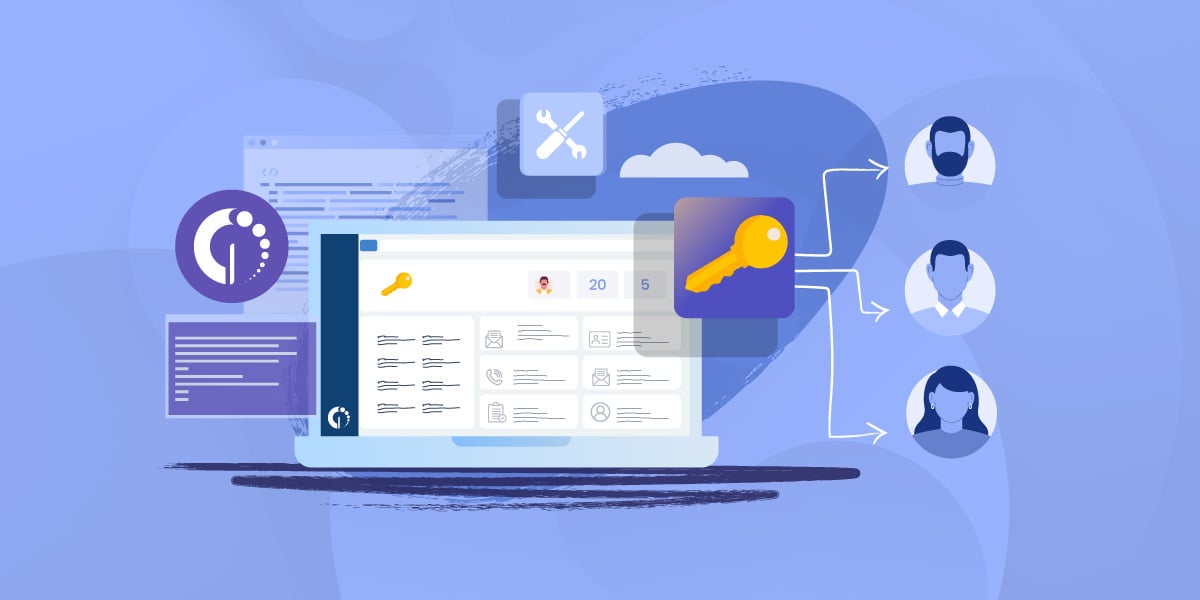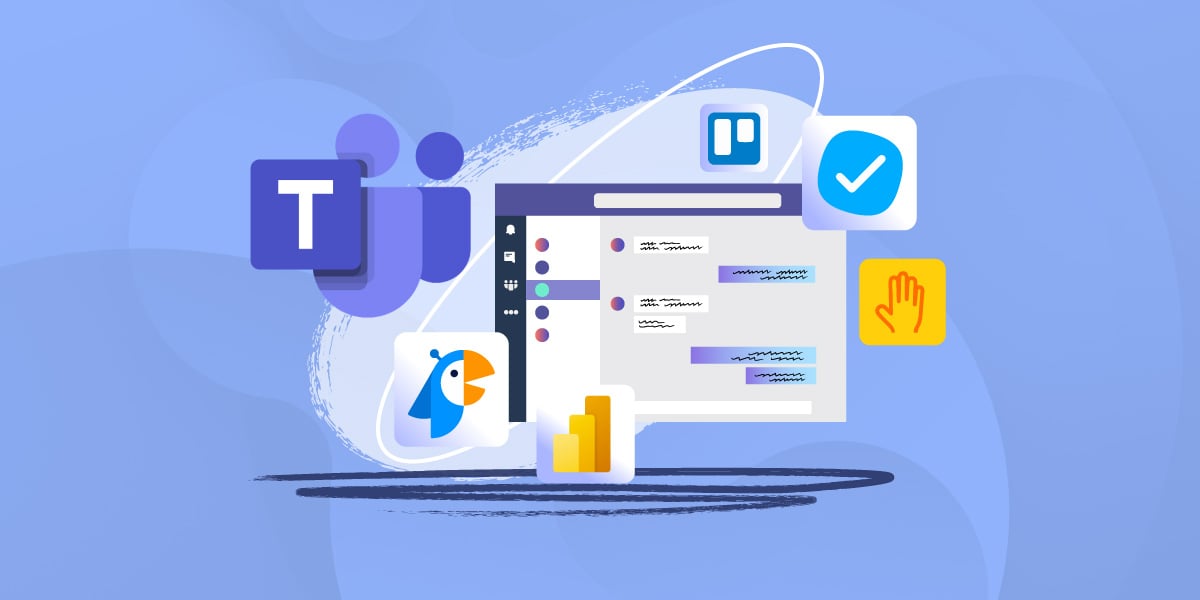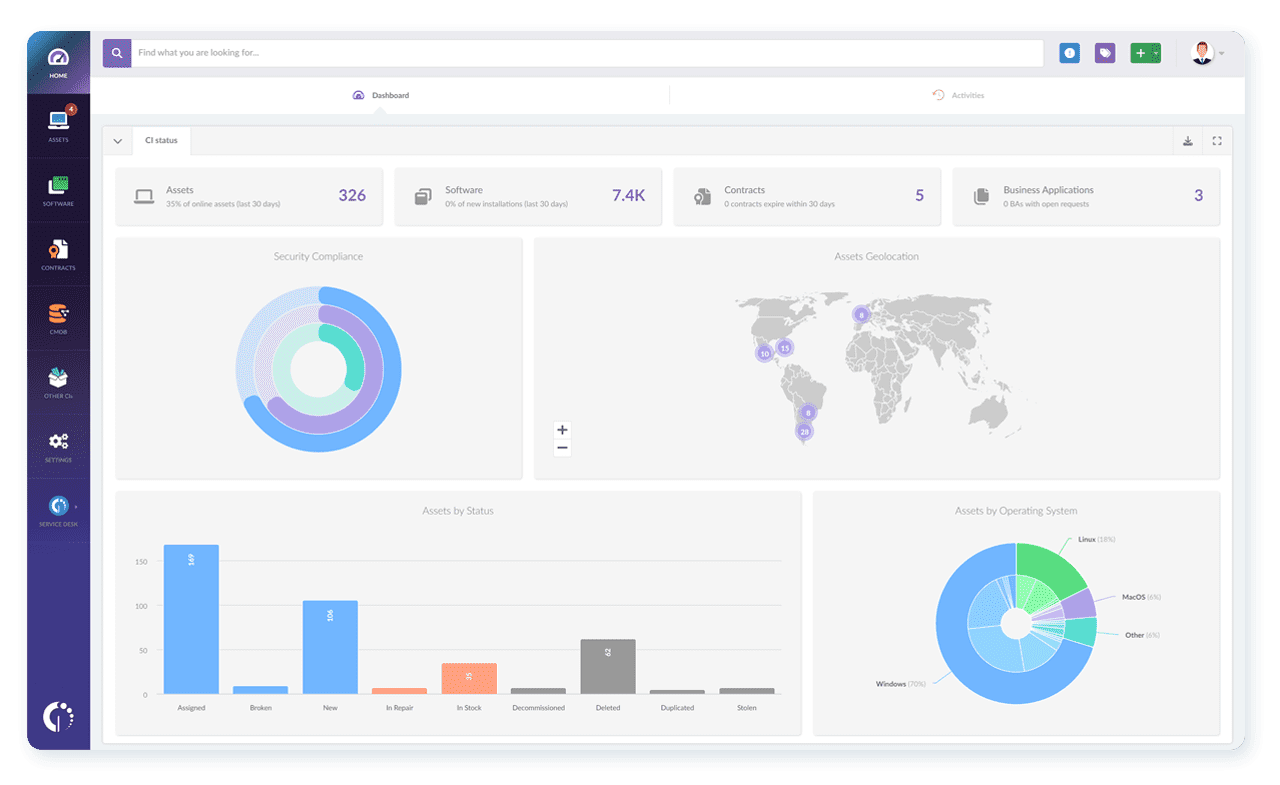Microsoft licensing changes are here, and if you’re wondering what it all means for your organization, you’re in the right place. These updates aren’t just tweaks—they’re reshaping how businesses manage their software, IT budgeting, and compliance strategies. For IT Asset Management (ITAM) professionals, staying on top of these changes is critical to avoid unnecessary costs and keep operations running smoothly.
In this blog post, we’ll break down the latest updates to Microsoft’s licensing model, highlight the upcoming changes for 2025, and explore how they could impact your organization. Plus, we’ll show you how InvGate Asset Management can help you navigate these changes, optimize your licensing strategy, and take full control of your software assets.
Ready to dive in? Let’s get started!
What changes have been made to Microsoft’s licensing model?
Microsoft’s licensing model is undergoing significant transformations, reshaping how businesses purchase, manage, and optimize their Software Asset Management. These updates reflect Microsoft’s commitment to modernizing its offerings, providing greater flexibility while addressing the evolving needs of organizations. For ITAM professionals, staying informed about these changes is crucial to managing costs, maintaining compliance, and optimizing operations.
This is the complete list of changes: the first three will take effect in 2025, while the last three have already been implemented in 2024.
- Transition from Enterprise Agreements (EA) to Microsoft Customer Agreements for Enterprise (MCA-E).
- Retirement of Power BI Premium SKUs (P-SKUs).
- New pricing and updates.
- Separation of Microsoft Teams from Office and Microsoft 365 suites (April 2024).
- Introduction of Microsoft 365 Copilot with flexible billing (December 2024).
- Expansion of Microsoft 365 Copilot eligibility (April 2024).
In the following sections, we’ll explore these changes in detail, highlighting what’s different, why it matters, and how organizations can adapt effectively. Let’s dive in!
#1: Transition from Enterprise Agreements (EA) to Microsoft Customer Agreements for Enterprise (MCA-E)
Starting in January 2025, Microsoft will phase out traditional Enterprise Agreements (EAs) and replace them with Microsoft Customer Agreements for Enterprise (MCA-E). This transition represents a major shift in how organizations manage their Microsoft licenses, streamlining the process while introducing new flexibility.
How it worked before
Under the EA model, organizations entered into long-term contracts (typically three years) with Microsoft. These agreements required upfront commitments to specific license quantities, regardless of whether the organization’s needs fluctuated during the contract period. While this model worked well for larger enterprises with stable needs, it lacked adaptability, often leading to over-licensing and wasted resources.
EAs also relied heavily on manual processes for procurement and management. Many organizations found it challenging to keep track of what they were paying for, leading to inefficiencies and compliance risks.
How it will work in 2025
The MCA-E introduces a modernized, digital approach to licensing. Here’s what’s changing:
- Flexibility: Organizations can scale their licensing needs up or down without being locked into long-term commitments.
- Streamlined management: The MCA-E eliminates many of the manual processes associated with EAs. Contracts are now managed digitally, making it easier to track licenses and ensure compliance.
- Simplified procurement: The new model allows for easier adjustments and renewals, reducing the administrative burden on IT teams.
#2: Retirement of Power BI Premium SKUs (P-SKUs)
By the end of 2024, Microsoft will retire Power BI Premium SKUs (P-SKUs) and transition to a new licensing model based on Azure Fabric. This change introduces flexible SKU sizes and a pay-as-you-go billing option, fundamentally altering how organizations access and pay for Power BI services.
How it worked before
Previously, Power BI Premium was licensed using P-SKUs, which offered a fixed set of features and capacities under a subscription-based model. Organizations had to commit to specific licensing tiers, regardless of whether their actual usage aligned with the purchased capacity. This often resulted in over-provisioning and underutilization of resources.
The fixed nature of P-SKUs also meant limited scalability. Organizations experiencing fluctuations in usage—such as seasonal spikes or shifts in data workloads—had to either upgrade to a higher tier or manage within the constraints of their existing plan, neither of which was ideal.
How it will work in 2025
Starting in 2025, Power BI Premium licensing will transition to Azure Fabric. Here’s what’s changing:
-
Flexible SKU sizes: Azure Fabric introduces a broader range of licensing tiers, enabling organizations to select a plan that closely aligns with their specific needs.
- Pay-as-you-bo billing: Instead of committing to a fixed subscription, organizations can pay based on actual usage, providing greater cost control and eliminating the need to over-provision.
- Integrated data solutions: As part of Azure Fabric, Power BI will now integrate more seamlessly with other Microsoft Azure services, enhancing data processing and analytics capabilities.

#3: New Microsoft pricing and updates
Beginning in April 2025, Microsoft will introduce a 5% price increase for organizations opting for monthly billing under annual agreements. This change reflects Microsoft’s broader effort to encourage customers to commit to annual payment plans while still offering the flexibility of monthly installments for those who need it.
How it worked before
Previously, organizations with annual term agreements could choose to pay monthly without any additional cost. This allowed businesses to manage cash flow more easily while benefiting from annual subscription rates. For many organizations, this arrangement provided the best of both worlds: cost savings from an annual plan combined with the flexibility of monthly payments.
How it will work in 2025
Starting in April 2025, organizations that choose monthly billing under an annual agreement will incur a 5% premium on their subscription costs. Here’s how this impacts the payment structure:
- Incentive for annual payments: Microsoft is incentivizing organizations to pay for their annual plans upfront to avoid the additional costs associated with monthly billing.
- Flexibility with added costs: Businesses can still choose monthly billing, but they’ll need to account for the slight increase in overall expenses.
#4: Separation of Microsoft Teams from Office and Microsoft 365 Suites
In April 2024, Microsoft began offering versions of Office and Microsoft 365 without Microsoft Teams. This change initially rolled out in the European Economic Area (EEA) and Switzerland, later expanding globally.
How it worked before
Previously, Microsoft Teams was bundled as a standard component of Office and Microsoft 365 suites. Organizations had no option to purchase these suites without Teams, even if they preferred to use other collaboration tools. This all-in-one approach simplified licensing but forced companies to pay for tools they didn’t necessarily need or use.
How it works now
Organizations now have the flexibility to choose suites with or without Microsoft Teams. Key changes include:
- Standalone option: Companies can purchase versions of Office 365 and Microsoft 365 that exclude Teams, potentially saving costs for those using alternative communication platforms.
- Separate licensing for teams: Businesses that still require Teams can license it independently.

#5: Introduction of Microsoft 365 Copilot with flexible billing
In December 2024, Microsoft introduced a new subscription model for Microsoft 365 Copilot, offering annual subscriptions with the option of monthly billing. This update provided businesses with greater flexibility in managing costs while accessing Microsoft’s AI-driven features.
How it worked before
Before this change, Microsoft 365 Copilot was only available through annual subscriptions, requiring organizations to pay upfront for the entire year. While this model worked well for businesses with stable budgets, it offered little flexibility for organizations needing to manage cash flow more dynamically.
How it works now
The new subscription model gives organizations more control over how they manage payments. Here’s what’s different:
- Monthly billing option: Businesses can now opt to pay for their annual subscription in monthly installments.
- 5% premium for monthly payments: While the new option adds flexibility, it comes at a slightly higher cost—5% more than paying upfront for the full year.
#6: Expansion of Microsoft 365 Copilot eligibility
In April 2024, Microsoft expanded the eligibility for Microsoft 365 Copilot, making it accessible to a broader range of subscription plans. This change aimed to democratize access to AI-powered tools, enabling more organizations to leverage the productivity-enhancing features of Copilot.
How it worked before
Initially, Microsoft 365 Copilot was limited to higher-tier subscription plans such as Office 365 E5 and Microsoft 365 E5. This restricted its use primarily to larger organizations with significant IT budgets.
How it works now
The expansion allows more subscription tiers to include Microsoft 365 Copilot. Notable changes include:
- Eligibility for lower tiers: Plans like Microsoft 365 F1, F3, Office 365 E1, and Microsoft 365 Business Basic now include Copilot, making it accessible to smaller organizations and frontline workers.
- Broader access to AI tools: The inclusion of Copilot across more plans democratizes AI-powered productivity, providing more users with tools to streamline tasks and workflows.

How does Microsoft's licensing changes affect organizations?
Microsoft's licensing changes bring new opportunities and challenges for organizations. They impact budgeting, planning, and IT Management practices, requiring a more strategic approach to stay compliant and cost-effective. Let’s take a closer look at how each change affects organizations and ITAM professionals.
#1. Transition from EA to MCA-E
The shift from EAs to MCA-E represents a major overhaul in how businesses manage Microsoft licenses. For organizations, this transition means a move away from rigid, long-term commitments to a more flexible, digitally managed agreement.
While this makes License Management simpler and more scalable, it also places a greater responsibility on IT teams to monitor usage and align subscriptions with business needs. Organizations will need to reassess their current plans and make decisions about transitioning smoothly to the new model.
#2. Retirement of Power BI Premium SKUs (P-SKUs)
The retirement of P-SKUs in favor of Azure Fabric-based licensing introduces scalability and pay-as-you-go pricing. This change is particularly beneficial for organizations with fluctuating workloads, as they can now align costs more closely with actual usage.
However, existing customers using Power BI Premium under the old model will need to transition to the new system, which could create short-term disruptions. IT teams must ensure that ongoing services continue seamlessly while preparing budgets for potential cost variability.
#3. Price adjustments for monthly billing options
The introduction of a 5% price premium for monthly billing under annual agreements requires organizations to revisit their payment strategies. For those with stable budgets, paying upfront annually will be more cost-effective, but businesses with tight cash flows may still opt for monthly billing despite the added cost.
IT teams will need to work closely with finance departments to evaluate the trade-offs between flexibility and savings, ensuring budget adjustments are made in advance.
#4. Separation of Microsoft Teams from Office and Microsoft 365 Suites
Microsoft’s decision to make Teams an optional add-on allows organizations to save costs by only subscribing to tools they actively use. For businesses relying on alternative collaboration tools like Slack or Zoom, this change offers immediate savings.
However, organizations that decide to keep Teams will need to manage it as a standalone subscription, which could add complexity to their licensing and billing processes. IT teams will also need to communicate the impact of this change to ensure business continuity for employees reliant on Teams.
#5. Introduction of Microsoft 365 Copilot with flexible billing
Microsoft 365 Copilot’s new billing flexibility is a welcome addition, particularly for businesses that prioritize cash flow management. While monthly billing options add convenience, the associated 5% premium increases overall costs, especially for long-term users.
Organizations adopting Copilot will also need to evaluate how its AI-driven features align with their operational goals, ensuring it delivers enough productivity gains to justify the investment.
#6. Expansion of Microsoft 365 Copilot eligibility
The expanded eligibility for Microsoft 365 Copilot allows more organizations, including smaller businesses and those on lower-tier plans, to access its AI capabilities. This change democratizes access to advanced features, enabling broader adoption.
However, ITAM professionals will need to assess whether the addition of Copilot aligns with their organization’s objectives and provides sufficient value. Additionally, onboarding and training will be critical to help employees make the most of this powerful tool.
How can InvGate help address this?
Navigating Microsoft’s licensing changes can feel overwhelming, but it doesn’t have to be. InvGate Asset Management simplifies the process by giving you complete visibility and control over your IT assets.
From monitoring software usage to Compliance Management, our tools help you adapt seamlessly to these changes while optimizing your software spend. Let’s explore how InvGate can support your organization in managing these transitions effectively.
1. Gain full visibility into your software assets

One of the biggest challenges with Microsoft’s licensing changes, like the move to MCA-E or the new pay-as-you-go Power BI licensing model, is understanding how licenses are being used.
InvGate Asset Management provides a centralized dashboard where you can track all your licenses, subscriptions, and usage data in real time. This ensures you’re not paying for unused licenses and helps you make data-driven decisions about transitioning to Microsoft’s new models. You can actually customize your dashboards.
2. Optimize licensing costs

With changes like the price increase for monthly billing options and the standalone Teams offering, managing licenses strategically is crucial to avoid unnecessary expenses.
InvGate Asset Management identifies opportunities to consolidate subscriptions, eliminate redundancies, and switch to cost-effective plans. Additionally, its software metering feature tracks application usage in detail, helping you pinpoint underused or unused licenses. By reallocating resources or canceling unnecessary subscriptions, you can optimize spending and ensure your license usage aligns with your organization's needs.
3. Simplify and ensure Compliance Management
Microsoft's evolving licensing models, such as the transition to MCA-E and the retirement of legacy SKUs like Power BI Premium, make compliance a critical priority.
InvGate Asset Management streamlines this process by automating license tracking, integrating contract data with usage reports, and providing detailed compliance insights. With tools to monitor license utilization, detect unauthorized installations, and identify gaps, your organization can stay aligned with Microsoft’s requirements while mitigating risks.
4. Streamline budget planning
Microsoft’s changes, such as the expansion of Copilot eligibility and the price premium for monthly billing plans, demand careful budget adjustments.
InvGate Asset Management equips finance and IT teams with tools to forecast costs based on real usage patterns and plan for upcoming expenses. By providing a clear picture of your software landscape and anticipated costs, the platform ensures you’re prepared for licensing transitions and can make informed financial decisions without surprises.

5. Support smooth transitions
Whether it’s adopting Azure Fabric for Power BI, adjusting to standalone Teams licensing, or transitioning to MCA-E, change can disrupt operations.
InvGate Asset Management provides a centralized solution to manage these transitions with minimal friction. Our tools help you inventory your current subscriptions, plan for changes, and ensure a smooth transition to Microsoft’s new licensing structures.
Conclusion
Microsoft’s licensing changes are reshaping how organizations purchase, manage, and optimize their software assets. While these updates bring opportunities for flexibility and cost optimization, they also introduce challenges in compliance, budgeting, and planning. Staying informed and proactive is essential for navigating this evolving landscape.
With tools like InvGate Asset Management, organizations can confidently manage these transitions, optimize licensing strategies, and maintain compliance.
By leveraging InvGate’s features, IT teams can turn these changes into opportunities for growth and efficiency. Ask for your 30 day free trial and see for yourself. It’s time to take control and ensure your software licensing strategy is future-ready!
Frequently Asked Questions
1. Is Microsoft removing Teams from E3?
No, Microsoft is not removing Teams from E3 entirely. However, they now offer standalone versions of Office 365 and Microsoft 365 without Teams, giving organizations more flexibility in their subscriptions.
2. What is the 90-day rule for Microsoft licenses?
The 90-day rule restricts organizations from reassigning licenses to another user or device more than once within 90 days. This policy helps maintain compliance and prevents frequent reassignments to avoid additional licensing costs.
3. How can I reduce Microsoft licensing costs?
You can optimize costs by reviewing current usage, consolidating underutilized licenses, switching to annual payments, and exploring Microsoft’s standalone Teams or pay-as-you-go Power BI options. Tools like InvGate Asset Management can help identify savings opportunities.
4. What is the MCA-E, and how does it differ from EAs?
The Microsoft Customer Agreement for Enterprise (MCA-E) replaces Enterprise Agreements (EAs) with a more flexible, digital contract management model, allowing easier scaling of licenses and eliminating rigid three-year commitments.
5. How does the price adjustment for monthly billing affect me?
Starting April 2025, organizations opting for monthly billing under annual agreements will face a 5% price premium. Annual upfront payments remain more cost-effective.
6. How will Power BI licensing changes impact my organization?
The transition to Azure Fabric offers flexible pay-as-you-go billing and improved integration but requires careful planning to avoid disruptions during the migration from legacy P-SKUs.
7. Who is eligible for Microsoft 365 Copilot now?
Microsoft has expanded Copilot eligibility to include lower-tier plans such as Business Basic, Office 365 E1, and Microsoft 365 F1 and F3, making AI tools more accessible to smaller teams and frontline workers.















